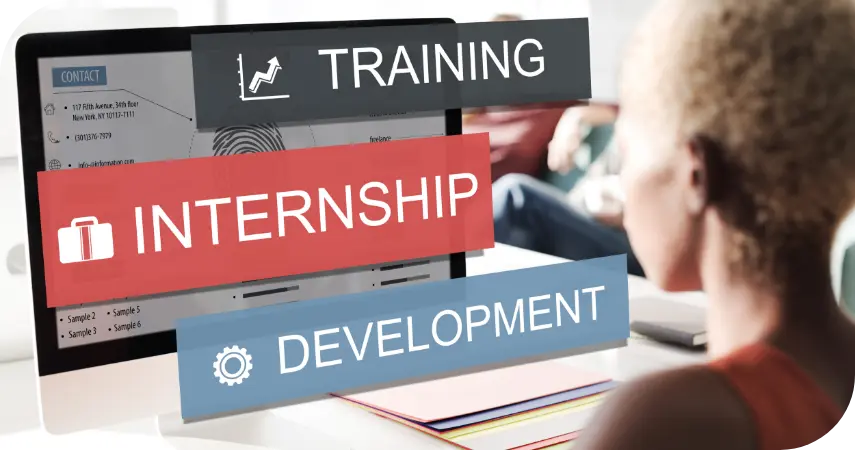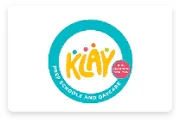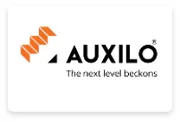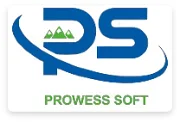
Empowering Your Workforce: Revolutionize Employee Training with LMS-driven Articles
In the dynamic landscape of business, where adaptability and innovation reign supreme, the
significance of employee training via articles, quizzes, videos, and other contemporary methods
cannot be overstated. According to a report, 92% of employees say
employee training programs
have a positive effect on their engagement when well-planned. In an era where knowledge is a key
differentiator, cultivating a skilled and up-to-date workforce is not just a strategic choice
but a business imperative.
Enter the realm of Learning Management Systems (LMS), the
beacon
guiding employers like you
toward a future where training isn't merely a routine but a transformative experience. LMS has
become the cornerstone of modern employee development, offering a centralized platform to
streamline and enhance learning initiatives.
You understand the value of nurturing a learning culture within your organization. Now,
imagine
taking this commitment to employee growth a step further—introducing a paradigm shift where
training seamlessly intertwines with the fabric of your employees' daily routines. This is where
the fusion of Learning Management Systems and article-based learning emerges as the
game-changer.
In the ever-changing landscape of employee development, PlayAblo is at the forefront of
innovation, introducing a transformative approach to learning—article-based learning.
● Dynamic Content Delivery: PlayAblo employs article-based
learning,
delivering training content
through engaging and informative resources. This dynamic method transcends traditional
approaches, offering a more accessible and interactive learning experience.
● Engagement Through Narratives: Articles on PlayAblo are crafted
as
narratives, captivating
readers and transforming learning into an immersive and enjoyable experience.
● Flexibility and Accessibility: Employees have the flexibility
to engage
with articles at their
own pace, promoting self-directed and personalized learning. Accessibility is paramount,
allowing team members to delve into articles whenever they have the time.
● Interactive Learning Elements: PlayAblo goes beyond static
content,
incorporating quizzes,
discussions, and multimedia within articles to enhance engagement and understanding.
● Microlearning Precision: Recognizing the modern attention span,
PlayAblo
employs a
microlearning approach within
articles—succinct, focused, and designed for maximum impact.
● Adaptive Learning Paths: Acknowledging individual differences,
PlayAblo
offers adaptive
learning paths within its article-based framework, tailoring content to individual skill levels
and preferences.
As we explore PlayAblo's transformative possibilities, it's clear that article-based learning
isn't just a feature—it's a strategic shift in how organizations approach employee development,
with PlayAblo leading the way.

Benefits of Learning Via Articles: A Modern Approach to Employee Development


In employee training, adopting an article-based learning approach presents a myriad of advantages, catering to the needs of contemporary learners.
1. Comprehensive Overview:
● Article-based learning provides a comprehensive overview of training content. Articles can cover a range of topics, ensuring that learners receive a well-rounded understanding of the subject matter.
2. Accessibility:
● Accessibility is a key benefit. Articles can be accessed anytime, anywhere, breaking down geographical and time constraints. This flexibility accommodates the diverse schedules and locations of modern learners.
3. Flexibility:
● The flexibility of article-based learning is unmatched. Learners can engage with content at their own pace, facilitating self-directed learning. This adaptability ensures that each individual can tailor their learning experience to suit their unique preferences and needs.
4. Engagement Through Relevance:
● Modern learners seek relevance in their training materials. Articles can be crafted to directly address the specific needs and challenges faced by employees, enhancing engagement and application of knowledge.
5. Multimodal Learning:
● Articles allow for multimodal learning experiences. Incorporating various media within articles—such as images, videos, and interactive elements — enhances engagement and caters to different learning styles.
6. Practical Application:
● Articles can present real-world scenarios and case studies, facilitating the practical application of theoretical knowledge. This application-oriented approach ensures that employees not only understand concepts but can also implement them in their roles.
7. Scalability:
● Article-based learning is highly scalable. As organizations grow, the approach remains effective, allowing for the creation and distribution of articles to a large audience without compromising quality.
How LMS Enhances Article-Based Training Delivery: A Holistic Approach to Employee Development


When coupled with a robust Learning Management System, article-based training takes on a new dimension, offering a comprehensive and personalized learning experience for employees.
1. Introduction to Key LMS Features:
● A robust LMS serves as the foundation for effective article-based training. It
provides a
centralized platform where articles can be organized, accessed, and managed seamlessly.
● User-friendly interfaces, search functionalities, and categorization options within
the
LMS
enhance the overall accessibility of article-based content.
2. Personalized Learning Paths:
● One of the key strengths of an LMS is its ability to create
personalized learning paths
for individual
employees. Leveraging user data and preferences, the LMS tailors the sequence of
articles to match the specific needs and skill levels of each learner.
● Personalization ensures that employees receive content relevant to their roles,
fostering
a
more engaging and effective learning experience.
3. Progress Tracking and Analytics:
● A robust LMS goes beyond content delivery; it incorporates features for tracking employee progress.
Managers
and learners alike can monitor completion rates, quiz scores, and overall
engagement with article-based training.
● Analytics generated by the LMS
offer
valuable insights into the effectiveness of the training
program, enabling organizations to make data-driven decisions for continuous
improvement.
4. Adaptive Learning Technologies:
● Leading LMS platforms often employ adaptive learning technologies. These technologies dynamically adjust the difficulty and content of articles based on individual learner performance, ensuring an optimal learning pace for each employee.
5. Seamless Integration with Other Learning Resources:
● An effective LMS seamlessly integrates article-based training with other learning resources. Whether incorporating videos, interactive modules, or assessments, the LMS provides a cohesive learning environment that maximizes the benefits of various content formats.
6. Mobile Compatibility:
● In the era of mobile learning, a forward-thinking LMS ensures compatibility with various devices. This mobile accessibility allows employees to engage with article-based training on the go, further enhancing flexibility and convenience.
7. Collaboration and Social Learning:
● Integrating social learning features within the LMS fosters collaboration among employees. Discussion forums, commenting on articles, and shared learning experiences contribute to a sense of community, enhancing the overall effectiveness of article-based training.
Crafting Impactful Training Articles: Elevating Employee Learning Through Multimedia Integration

Creating training articles that resonate and engage requires a strategic approach that combines compelling content with multimedia elements. Here are key tips to ensure your articles are not just informative but also compelling for effective employee training.
1. Clarity and Relevance:
● Start with a clear objective for each article. Identify the specific skill, knowledge,
or
task
you want to convey.
● Ensure the content remains relevant to the learner's role and aligns with
organizational
goals.
2. Engaging Introductions:
● Capture attention from the beginning. Craft introductions that spark interest, posing questions or presenting real-world scenarios relevant to the article's topic.
3. Concise and Focused Content:
● Keep articles concise and focused. Break down complex concepts into digestible sections, facilitating better understanding and retention.
● Each article should address a specific aspect of the overall learning objective, contributing to a cohesive learning journey.
4. Multimedia Integration:
● Enhance engagement by incorporating multimedia elements such as images, infographics,
and
charts. Visual aids complement the text, making the content more accessible and
memorable.
● Leverage videos to provide demonstrations, case studies, or expert insights, adding a
dynamic
layer to the learning experience.
5. Interactivity for Engagement:
● Foster engagement by incorporating interactive elements within articles. Include
quizzes,
polls, or clickable elements that encourage active participation.
● Interactive features not only break the monotony of text but also reinforce key
concepts
through hands-on engagement.
6. Consistent Tone and Style:
● Maintain a consistent tone and style across articles. This creates a cohesive learning
experience and helps build familiarity with the training material.
● Consider the audience's preferences and adapt the tone to resonate with their
professional
context.
7. Real-World Applications:
● Relate theoretical concepts to real-world
applications.
Provide practical examples, case
studies, or scenarios that illustrate how the knowledge or skill can be applied in the
workplace.
● Demonstrating the practical relevance of the content enhances its value for learners.
8. Learner-Centric Approach:
● Tailor content to the learner's perspective. Address common challenges, concerns, or
questions
they may have related to the topic.
● A learner-centric approach fosters a sense of relevance and personal connection with
the
material.
9. Clear Takeaways:
● Summarize key takeaways at the end of each article. Reinforce the main points and provide guidance on how learners can apply the newly acquired knowledge or skills.
10. Feedback Mechanism:
● Implement a feedback mechanism for continuous improvement. Encourage learners to provide feedback on articles, gauging their effectiveness and identifying areas for enhancement.
Measuring Training Success: The Crucial Role of Analytics and Feedback

Evaluating the effectiveness of employee training goes beyond the completion of courses. To truly gauge success and drive continuous improvement, organizations must leverage analytics to track progress and actively seek feedback from participants.
1. Utilizing Analytics for Progress Tracking:
● Quantitative Metrics: Implement key performance indicators (KPIs)
to measure
quantitative
aspects of employee progress. Track completion rates, assessment scores, and time spent
on
each
training module.
● User Engagement Analytics: Analyze user engagement metrics to understand how employees
interact with the training content. This includes click-through rates, time spent on
articles,
and participation in interactive elements.
2. Identifying Knowledge Gaps:
● Leverage analytics to identify knowledge gaps
among
employees. Assess
areas where participants
consistently struggle or exhibit lower proficiency levels.
● Targeted analytics help refine training content, addressing specific challenges and
ensuring a
more effective learning experience.
3. Adaptive Learning Paths:
● Implement adaptive learning technologies that use analytics to dynamically adjust learning paths based on individual progress. This personalized approach ensures that each employee receives content tailored to their needs.
4. Feedback Loops for Continuous Improvement:
● Establish a robust feedback loop to gather insights directly from participants.
Encourage
employees to provide feedback on the relevance, clarity, and effectiveness of the
training
content.
● Regularly analyze feedback to identify trends, uncover areas for improvement, and
implement
adjustments to enhance overall training quality.
5. Learning Experience Analytics:
● Assess the overall learning experience through analytics. Monitor user satisfaction,
navigation patterns, and overall engagement to gauge the effectiveness of the training
platform.
● Identify any technical or usability issues that may hinder the learning experience and
address
them promptly.
6. Post-Training Performance Analysis:
● Extend analytics beyond the training period to analyze post-training performance.
Track
how
well employees apply the acquired knowledge or skills in their roles.
● Linking training success to on-the-job performance
provides
a
comprehensive view of the
training's real-world impact.
7. Continuous Iteration Based on Data:
● Embrace a culture of continuous improvement based on data-driven insights. Regularly
review
analytics and feedback to identify areas of strength and areas that require adjustment.
● Iterate training programs
based on these
findings,
ensuring ongoing relevance and
effectiveness.
Evaluating the effectiveness of employee training goes beyond the completion of courses.
To
truly gauge success and drive continuous improvement, organizations must leverage
analytics
to
track progress and actively seek feedback from participants.
8. Benchmarking and Comparative Analysis:
● Benchmark employee progress against industry standards or organizational benchmarks.
Comparative analysis provides context for evaluating the effectiveness of training
initiatives.
● Use benchmarking insights to set realistic goals and expectations for future training
programs.
Implementation Guide: Integrating LMS-Driven Article Learning

Follow this step-by-step guide to seamlessly integrate this innovative approach into your organization, addressing potential challenges along the way.
1. Define Learning Objectives:
● Clearly outline the learning objectives you aim to achieve with LMS-driven article learning. Align these objectives with organizational goals to ensure relevance and impact.
2. Select a Robust LMS Platform:
● Choose a reliable LMS platform that supports article-based learning. Consider factors such as user interface, scalability, mobile compatibility, and integration capabilities with existing systems.
3. Content Creation and Curation:
● Develop or curate relevant and engaging articles for your training content. Ensure that articles align with the defined learning objectives and cater to the diverse needs of your workforce.
4. Personalized Learning Paths:
● Leverage the capabilities of the LMS to create personalized learning paths. Tailor the sequence of articles based on individual roles, skill levels, and preferences.
5. Integrate Multimedia Elements:
● Enhance the effectiveness of articles by incorporating multimedia elements such as images, videos, and interactive features. Ensure that these elements complement the content without overwhelming learners.
6. Implement Adaptive Learning Technologies:
● Explore adaptive learning technologies within the LMS to dynamically adjust learning paths based on individual progress. This ensures a customized and efficient learning experience.
7. Conduct Training for Users:
● Provide comprehensive training for users, including administrators, instructors, and learners. Familiarize them with the LMS interface, navigation, and the unique features of article-based learning.
8. Addressing Challenges:
● Challenge: Resistance to Change
○ Solution: Implement a robust change management plan. Communicate the benefits of LMS-driven article learning, address concerns, and provide support for a smooth transition.
● Challenge: Technical Issues
○ Solution: Conduct thorough testing of the LMS platform before implementation. Provide technical support and training to address any issues that may arise during the rollout.
● Challenge: Content Relevance
○ Solution: Regularly update and refresh content to ensure ongoing relevance. Encourage feedback from users and use analytics to identify areas for content improvement.
● Challenge: User Engagement
○ Solution: Foster a culture of engagement by incorporating interactive elements within articles. Encourage collaboration, discussions, and feedback to enhance overall participation.
9. Monitor Analytics and Feedback:
● Set up a system for monitoring analytics and gathering feedback. Regularly review data to assess the effectiveness of the LMS-driven article learning and identify areas for improvement.
10. Iterate and Improve:
● Based on analytics and feedback, iterate and improve the LMS-driven article-learning
strategy.
Make adjustments to content, learning paths, or platform features to continuously
enhance
the
learning experience.
By following this comprehensive guide and proactively addressing potential challenges,
your
organization can successfully integrate LMS-driven article learning, fostering a culture
of
continuous learning and skill development.
Why Choose PlayAblo LMS for Delivering Article-Based Training?

Integration & SSO support

Rapid implementation
(Cloud-based SaaS solution)

Any Device - Any OS - Anytime

Learn at your place, your pace!

Learn offline

Build eLearning content 70% faster!

Integrated LMS and CMS

LIVE Classes

xAPI Compliant

Best in class dashboards

Self-Subscribe Courses

Auto-Subscribe Courses

Create mobile-friendly courses directly from PPTs
Why Choose PlayAblo LMS for Delivering Article-Based Training?
Integration & SSO support

PlayAblo integrates easily into your existing landscape of internal systems. We also support Single Sign-On making the integration extremely easy and fast.
Rapid implementation (Cloud-based SaaS solution)

PlayAblo is a Cloud-based SaaS solution that ensures rapid implementation, lower operating costs, increased scalability, and easy integration. New releases and upgrades are straightforward to propagate.
Any Device - Any OS - Anytime

Access PlayAblo’s learning content from any device, including desktops, smartphones, tablets and iPads. The training modules are optimized to fit most screen sizes.
Learn at your place, your pace!

Built for Micro-learning, PlayAblo allows learners the option to learn at their own pace and place. Progress as much as you can and continue from where you left off, whenever you can!
Learn offline

PlayAblo is a Cloud-based SaaS solution that ensures rapid implementation, lower operating costs, increased scalability, and easy integration. New releases and upgrades are straightforward to propagate.
Build eLearning content 70% faster!

Access PlayAblo’s learning content from any device, including desktops, smartphones, tablets and iPads. The training modules are optimized to fit most screen sizes.
Integrated LMS and CMS

The integrated LMS and CMS feature enable corporates to manage learners, keep track of their progress and performance, and create + distribute new learning materials -- all from one platform!
LIVE Classes

LIVE Classes are integral to the Blended Learning approach. PlayAblo comes pre-integrated with G-Meet, lending a real-time replication of the traditional classroom experience. Need another LIVE platform integrated? Just ask!
xAPI Compliant

PlayAblo’s xAPI compliant platform lets you add eLearning content that is inherently responsive for all devices and allows data collection about the wide range of experiences of your learners within your training.
Best in class dashboards

PlayAblo’s dashboards give a real-time view of your learners’ progress regarding aggregated usage, progress, and performance view.
Self-Subscribe Courses

PlayAblo lets learners search for non-mandatory courses and subscribe to additional programs per their job needs without any external intervention.
Auto-Subscribe Courses

Depending upon learner’s role and department, specific courses are mandatory or needed for compliance. You can set up courses for Auto subscriptions based upon rules, including recurring subscription for compliance.
Create mobile-friendly courses directly from PPTs

PlayAblo’s dashboards give a real-time view of your learners’ progress regarding aggregated usage, progress, and performance view.
Client Testimonials: Real Voices, Real Success

Klay
Founding Years Learning Solutions’s KLAY brand of preschools...

Auxilo
Auxilo believes that it’s the right of every student to avail quality...

Smile
Smile Foundation is an NGO focussed on creating independent...

Lifestyle
India’s leading fashion destination for the latest trends. Part...

Walmart vriddhi
Walmart Vriddhi program empowers MSMEs to succeed by optimizing...

Unnati
PlayAblo is an educational technology organisation with...

Prowess soft
Prowess Software Services, established in 2016, has branches...

Ethosh
ETHOSH creates innovative experiences that deliver content...

APML
Communication APML. APML possesses a fleet of more than 1200...

Field Assist
India’s leading fashion destination for the latest trends. Part of Dubai...

Acmegrade
Acmegrade is a knowledge and skill acquisition portal and...

Hotel
Hub
HotelHub is a hotel booking platform designed for Travel...

Yoma Multinational
Founded on an innovative idea that every small or large scale business...

Spectrum Consulting
Spectrum Consulting, set up in 2004, is an HR ...

Quatrro Mortgage
Quatrro Mortgage is a global services company offering business...